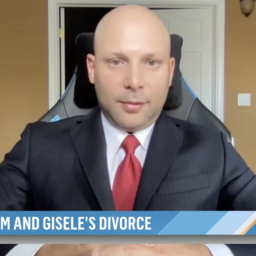It’s 10 am on a hot summer Monday morning and while most attorneys are probably laying out on the beach enjoying an extra day to their weekend, I’m in my office in downtown financial district ready for my next client to come in. Why? Because unlike in all other areas of law, summer is the busiest season for divorce in New York, and I ‘m a NYC divorce lawyer. With the sun shining, abundance of money and bikini clad bodies everywhere, high flying relationships are put to the ultimate test. Those that don’t pass and don’t have a prenuptial agreement, find themselves facing divorce and one of its main components: spousal support.
Spousal support (otherwise known as spousal maintenance or alimony) is a doctrine that obligates the spouse with more financial resources and income to support their spouse during and after the divorce. Temporary maintenance is during the divorce process and permanent or post-divorce maintenance is following the divorce. As a NYC divorce lawyer, my job is to first advise my clients on the law. Recent changes in the New York law provide for the following guidelines used by the courts to determine both temporary and post-divorce maintenance
- The “cap” on the payor’s income used for the maintenance formula is $175,000, above which will be a matter of the court’s discretion. The same $175,000 cap applies to post-divorce maintenance awards.
- There are two formulas: one where child support will be paid to the maintenance recipient; and one where child support will not be paid, or where it will be paid to the maintenance payor. Those formulas are as follows: a. With child support where the maintenance payor is also the non-custodial parent for child support purposes: (i) subtract 25% of the maintenance payee’s income from 20% of the maintenance payor’s income; (ii) multiply the sum of the maintenance payor’s income and the maintenance payee’s income by 40% and subtract the maintenance payee’s income from the result; (iii) the lower of the two amounts will be the guideline amount of maintenance; maintenance payor is the custodial parent for child support purposes: (i) subtract 20% of the maintenance payee’s income from 30% of the maintenance payor’s income; (ii) multiply the sum of the maintenance payor’s income and the maintenance payee’s income by 40% and subtract the maintenance payee’s income from the result; (iii) the lower of the two amounts will be the guideline amount of maintenance.
- Maintenance gets calculated first. Child support is then calculated using the income of the payor after subtracting maintenance to be paid and the income of payee income including maintenance received.
- If the court finds guideline amount of maintenance unjust or inappropriate after consideration, adjustments can be made with the court’s written or on the record decision. Where there is income over the cap, additional maintenance may be awarded after consideration.
- When determining temporary maintenance, the court can allocate between the parties the responsibility for payment of family expenses” while the divorce action is pending.
So what does all this mean to all of those whose weekend in the Hamptons proves final for their marriage? For the monied spouse, or the one making the big bucks, the law will cap your income at $175k for calculation of maintenance, and then it will be up to the non-monied spouse to prove that the court should go over that income for maintenance calculation, which is not an easy burden, since this was the exact situation that the new law was designed to curb. If you are a non-monied spouse or a stay home spouse who is not working, you can certainly rely on the guidelines to provide with support calculation up to the cap. However, if you want to continue enjoying the same lifestyle that existed during the marriage, you will have the job of proving that there are important factors that the court must consider and use additional income of your spouse over the cap. In addition to the guideline maintenance, the monied spouse may be required to continue paying for rent, mortgage, bills and all other carrying charges for the non-monied spouse in addition or as a part of the maintenance. Of course, the non-monied spouse may also pursue their attorneys fees for the divorce to be paid by the wealthier spouse.
As a NYC divorce lawyer, I tell my clients that the key thing to remember as far as spousal maintenance is concerned is that things will not be the way they were before during the marriage. Getting divorced will require each spouse to change their life as they know it, physically, emotionally and financially.
So if you lived in full reliance for financial support from your spouse, you must quickly realize that no matter how well you will do in your divorce, it will never be the way it was and you will now have to start figuring out how to support yourself and move forward. This is the tough part of being a NYC divorce lawyer since it’s my job to deliver this reality check during a consultation. In many cases, it’s difficult because clients have to face starting over without the same financial securities they enjoyed during the marriage. For many, this means going back to school, looking for a job or a second job or going to family and friends for financial support. For the payor spouse, having to pay spousal support, child support (if there are children), attorneys fees (often for both attorneys and the attorney for the children) and forensic experts while now supporting yourself and your own living expenses can often mean that there may be very little or no cash flow left over, even if the income is higher then the cap. And even if the payor spouse is very well off, there is always the emotional barrier of having to pay for someone who you possibly despise at this time. At the end, there is a one positive thought that I tell all my clients: Time heals divorce wounds. It will be over. It will just hurt like hell in the meantime, but as a NYC divorce lawyer, I will do all I can to make it easier. Enjoy the summer carefully my dear spouses.












